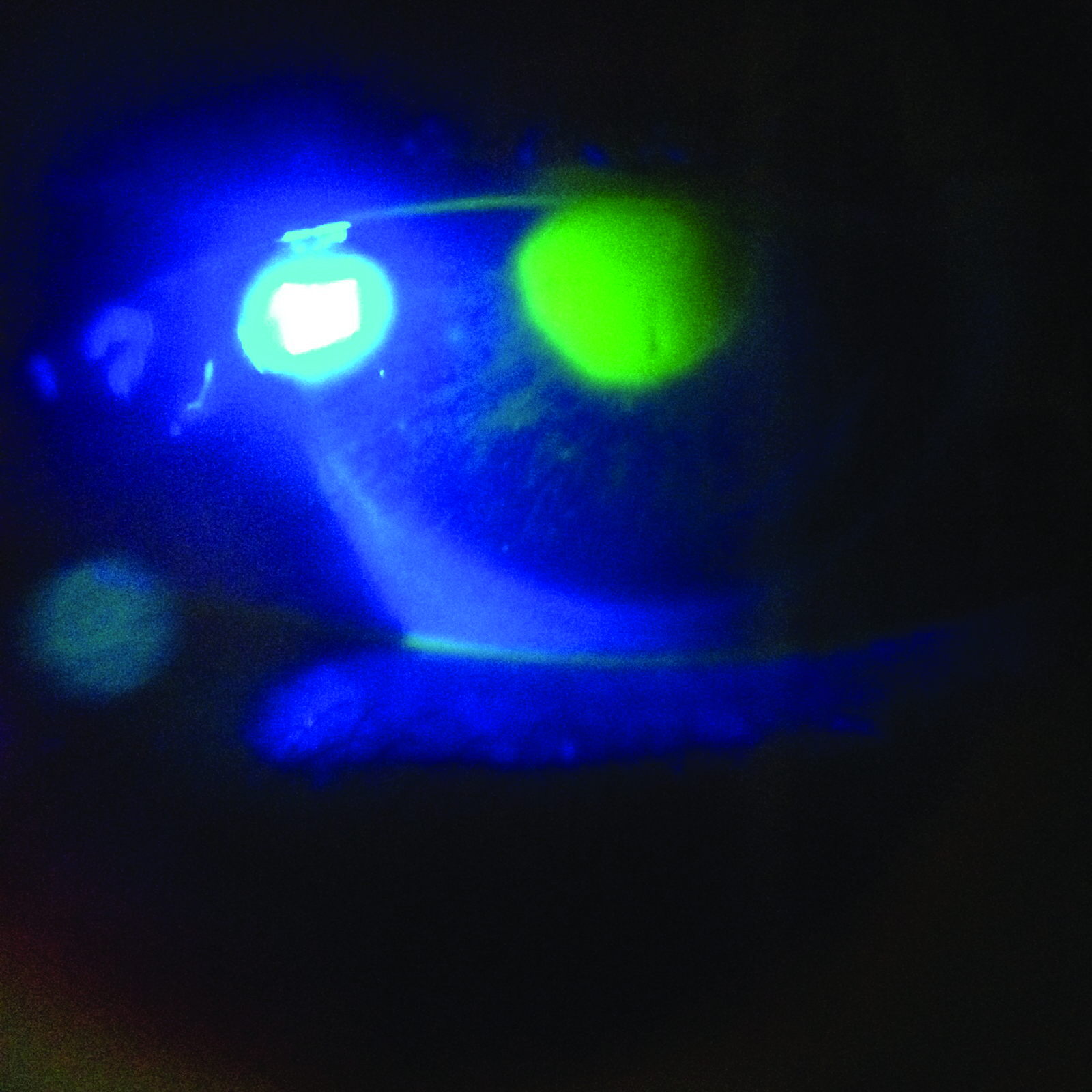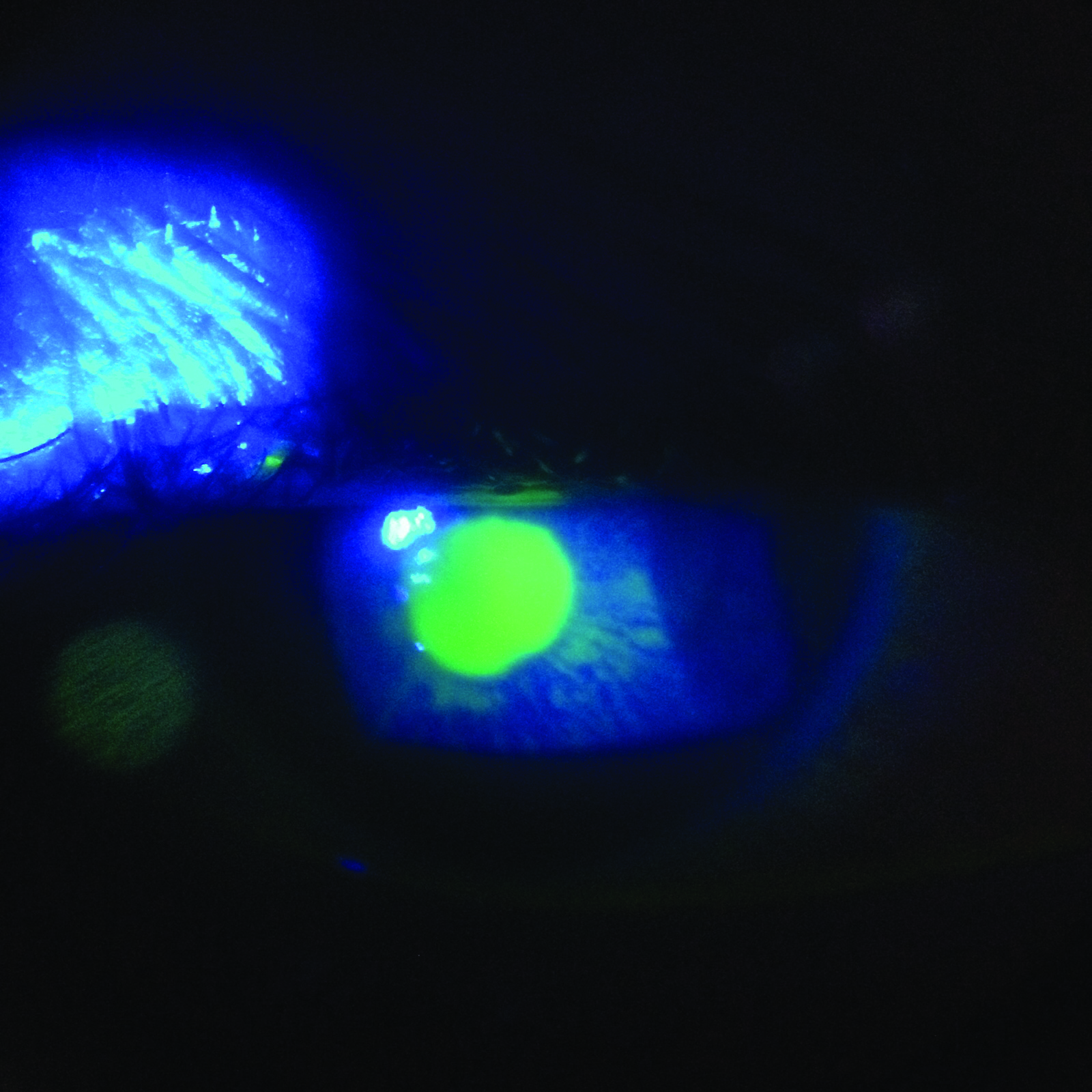Cow Urine Keratopathy: A Case Report
Sumeet Khanduja1, Prachi Jain2, Sumit Sachdeva3, Jitender Phogat4
1 Faculty, Regional Institute of Ophthalmology, Pt. BD Sharma PGIMS, Rohtak, Haryana, India.
2 Faculty, Ophthalmology, Saxena Eye Hospital, Rewari, Haryana, India.
3 Faculty, Regional Institute of Ophthalmology, Pt. BD Sharma PGIMS, Rohtak, Haryana, India.
4 Faculty, Regional Institute of Ophthalmology, Pt. BD Sharma PGIMS, Rohtak, Haryana, India.
NAME, ADDRESS, E-MAIL ID OF THE CORRESPONDING AUTHOR: Dr. Sumeet Khanduja, Faculty, Regional Institute of Ophthalmology, Pt. BD Sharma PGIMS, Rohtak-124001, Haryana, India.
E-mail: drkhanduja@gmail.com
Injury to the ocular surface has been described to occur with a wide variety of chemicals. In most cases the cause is industrial injury with acids or alkalis. We are reporting a case of ocular surface injury due to “Cow urine” which to the best of our knowledge is been reported for the first time. Cow urine is a well-accepted medicinal ingredient in ancient Indian medicine. However, wrong formulation and inadvertent prescriptions by quacks can lead to severe ocular surface injury and morbidity. Here, with this case report we have discussed the possible culprit and possible mechanism of ocular injury due to instillation of a concoction containing cow urine as an active ingredient and also discuss legal aspects of quackery in India.
Case Report
A 24-year-old male presented with complaints of pain, difficulty in opening and blurred vision in both eyes for the last 48 hours. The symptoms had started right after instillation of some eye drops by a village quack. These eye drops were proposed by the village quack to be a cure for refractive error. On examination, the uncorrected visual acuity was 6/60 and 4/60 OD and OS respectively. There were bilateral central disc shaped epithelial defects along with central corneal oedema mainly confined to anterior stroma in both eyes [Table/Fig-1,2]. Litmus paper put in cul-de-sac which did not show any change in colour. There were no anterior chamber cells or flare and limbal vasculature was normal. On preliminary questioning about the composition of the eye drops from the village quack he revealed that the drops were prepared using sedimented cow urine which was then boiled and mixed with freshly prepared soot (Surma) and applied in the eyes using metal rod. After examination, corneal scraping was taken from both eyes. A portion of scraped material was examined microscopically and the rest was sent for bacterial and fungal culture. The patient was prescribed oral analgesics and, topical moxifloxacin 0.5%, homatropine 2% and preservative free lubricating eye drops. Successive follow-ups were done daily. Initially the epithelial defects enlarged in size by nearly 1mm in diameter followed by complete regeneration in one week. The corneal oedema too subsided over two weeks with residual sub epithelial and anterior stroma haze. Best-corrected visual acuity improved to 6/12 OU. The endothelial cells morphology was normal on specular microscopy. Intraocular pressure was within normal limits during the follow up visits. Bacterial culture reported growth of Staphylococcusepidermidis and fungal culture was sterile.
Fluorescein staining of corneal epithelial defect OD.

Fluorescein staining of corneal epithelial defect OS.

Discussion
Although, ocular injuries due to chemicals are very common, to the best of our knowledge this is the first case report discussing ocular surface injury due to “Cow urine”. In our case since the incriminating drug was not retrieved, it will be difficult to pinpoint and describe the exact mechanism of corneal injury. The corneal injury could have been caused by one of the three elements: 1) The cow urine formulation; 2) “Surma powder; and 3) the metal rod applicator. We take on the three components one by one.
Cow urine has an important medicinal value in “Avurveda” the ancient Indian medicine system. With utility described dating back to vedic literature, oral formulation of cow urine has been used for curing diseases ranging from hypertension, coronary artery disease to cancer, asthma and even diseases like AIDS [1,2]. The major component is water 95%; others being urea 2.5% and the rest 2.5% contains sodium, nitrogen, sulphur and dissolved ammonia.
There are two chief methods of formulation described in Ayurveda:
Gaumutrasava: In this method cow urine is boiled in glass vessel to remove ammonia and then mixed with jaggery in ratio of 5:1. Gaumutra arka: This is the second method in which the vapors of cow urine are collected in a vessel as in distillation process [1].
It is possible that the retained ammonia in the urine could have caused ocular surface injury. Ammonia gas when dissolved in water forms an alkali ammonium hydroxide, which when in contact with the ocular surface leads to saponification and damage the corneal epithelium.
Since the patient had presented after 24 hours of onset of complaints it is possible that the hyperlacrimation lead to wash off of the alkali from the ocular surface leading to negative litmus paper test result.
The second component of the toxic drug mixture was freshly prepared “Surma” or “Kajal”.
“Surma” is a traditional eye cosmetic widely used in India and the Middle East. It’s mined as an ore, which is then ground into fine powder and then applied on the lash.
Though chiefly composed of antimony sulphide, it is frequently contaminated with lead and amorphous carbon. It is an ocular surface irritant and chronic application of surma in children is known to cause inflammation and occlusion of the nasolacrimal system [3].
In reference to our case it is possible that the surma particles abraded the corneal epithelium contributing to the damage. The third component is metal rod which is used to apply the drug caused thermal injury to the cornea leading to an epithelial defect. However, symmetrical presentation of the lesion and lack of limbal ischemia potentially rule out the last two possibilities.
In developing countries like India, skilled and qualified doctors have open competition with quacks and it is very common that the cow urine formulation may not be prepared as per standard recommendations and it holds the highest probability in our case. In a case titled Poonam Verma vs Aswin Patel (AIR 1996, SC 2111), the Hon’ble Supreme Court of India has given a definition of quack as “ a person who does not have knowledge of a particular system of medicine but practices in that system is a quack and a mere pretender to medical knowledge”. In another decision by the Supreme Court of India in 2002, it was held that “a professional may be held liable for negligence on the ground that he did not possessed of the requisite skill which he professes to have”[4]. Indian Medical Council act of 1956 provides that no person other than a medical practitioner enrolled on State Medical Register shall practice scientific medicine in any state of India [5]. Keeping all these rules and acts aside and the negligent stand of government, quackery is a deep rooted practice in rural India and quacks easily exploit the faith of patients as often they are the person of first contact. Where WHO and other International NGOs are putting giant efforts and resources towards eliminating preventable blindness, quackery induced ocular morbidity in underprivileged societies is still a submerged part of an iceberg.
Conclusion
The purpose of this case report is to bring in light the occult practices, often concealed by patients themselves, which alters the disease course and often delayed diagnosis contributes to the ocular morbidity.
[1]. Pathak ML, Kumar A, Gomutra-descriptive study Sachit Ayurveda 2003 7:81-84. [Google Scholar]
[2]. Jain N, Gupta V, Garg R, Silawat N, Efficacy of cow urine therapy on various cancer patients in Mandsaur District, India - A survey Int J Green Pharm 2010 4(1):29 [Google Scholar]
[3]. Mohta A, Kajal (Kohl) - A dangerous cosmetic Oman Journal of Ophthalmology 2010 3(2):100 [Google Scholar]
[4]. https://indiankanoon.org/doc/611474/ [Google Scholar]
[5]. IMA anti-quackery wing. http://www.ima-india.org/page.php?page_id=94 [Google Scholar]